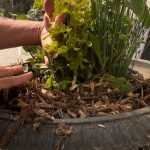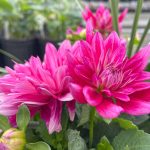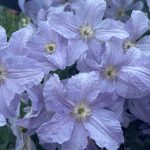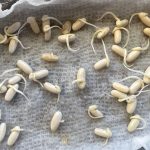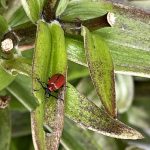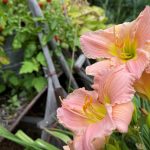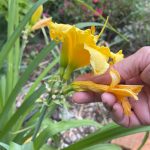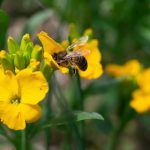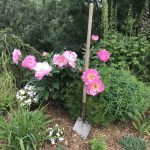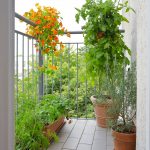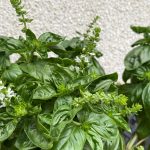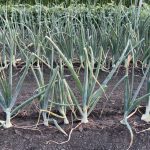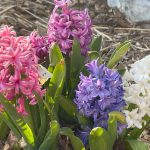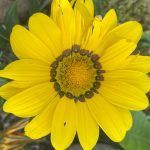Picking the right fertilizer for your plants can be difficult. If you’ve ever wanted to pull your hair out standing in front of fertilizer on a store shelf, I understand. Understanding fertilizer numbers and labels can be completely confusing, so let’s unscramble them!
Join me as I unravel what the fertilizer numbers mean, how they apply to flower and vegetable gardening, and how to decide which fertilizer is best for you.
Elements of Fertilizer
Plant metabolism is a very complex process requiring multiple elements and conditions for optimal plant functioning in growth, flower production, and the ability to replicate future generations. Plants need roughly 60 elements to grow, 17 of them are considered essential. When these processes go out of sync, there is trouble for the plant, either in a productive way or in a reproductive way. All fertilizer is composed of 3 basic things:
- Macronutrients
- Micronutrients
- Carrier substances
Nutrient availability to plants depends on soil structure (or texture), soil pH, and the quantity of organic matter.
One of the keys to a great soil is how many air spaces it has. The air spaces allow room to hold water and fertilizer. A good soil is one that has a looser texture and a good amount of organic matter. Sandy soils tend to lose nutrient or fertilizer content easily as water flows through it rather effortlessly. Soils with high organic content, like loamy soils, hold onto their nutrients well; soil with a higher clay content also holds onto their nutrients well, but they don’t tend to drain well.
Soil pH is how acidic or alkaline a soil is. pH has an effect on how the soil reacts to a fertilizer chemically and how that makes nutrients more or less available to a plant. Soils that are more neutral, between 5.5 – 7.0 work the best for most plants.
This is why it is always recommended to use a good quality soil with high organic matter, like composted bark. Composted bark and other organic matter behave like a sponge, collecting and holding onto fertilizer and water yet draining it as needed.
What is a Fertilizer Macronutrient?
When looking at the word ‘macronutrient’, think of the word ‘macro’ or ‘big’. Fertilizer macronutrients are components that plants use the most of. Macronutrients are divided into primary and secondary.
Primary Macronutrients
The three primary plant nutrients are:
- Nitrogen (N)
- Phosphorus (P)
- Potassium (K)
You will see the amount of these nutrients in order on a fertilizer bag, N-P-K. Plants use large quantities of these nutrients to support their growth. A plant’s primary nutrient contributes heavily to the role of plant enzymes, biochemical processes, and the health of plant cells.
Secondary Macronutrients
Secondary macronutrients are essential nutrients like the three above, but needed in less quantities. Secondary macronutrients in fertilizer are:
- Calcium (Ca)
- Magnesium (Mg)
- Sulphur (S)
What is a Fertilizer Micronutrient?
Plant micronutrients are components that are needed by plants in very small amounts but are vital to plant development and growth. When a plant’s nutrients are tested, these micronutrients are found in very trace amounts.
Micronutrients aren’t usually a problem in home gardening, they are more of an interest in larger horticultural food production projects. Some micronutrients are:
- Boron (B)
- Chlorine (Cl)
- Copper (Cu)
- Iron (Fe)
- Nickel (Ni).
The Big Three Fertilizer Numbers (N-P-K) and What They Mean
The three big numbers that you always see on a fertilizer label stand for the percentage of macronutrients that are in the bag or bottle of fertilizer. The first number is Nitrogen (N), the second number is Phosphorus (P), and the third number is Potassium (K). Let’s talk about those now:
N- Nitrogen: What Nitrogen Does in Fertilizer
For Nitrogen, think UP. Nitrogen helps plant growth UP above the soil. Plant growth above the soil is leafy green growth and stem growth. Nitrogen promotes healthy green growth as it influences chlorophyll. Healthy leaves look dark green in colour. Pale or yellow leaves generally means the plant needs more nitrogen, unless the leaf colour is naturally chartreuse. Nitrogen is considered to be a ‘mobile’ nutrient, this means that it moves with water. Give plants a feed of nitrogen when you want to green up plants after transplanting or after perennials have emerged in spring. Most perennials only need one or two applications per season and most annuals need consistent weekly fertilizer. If you are looking for a fertilizer for deep green grass, you would look for one that has a high first number, like 25-0-4.
P – Phosphorous: What Phosphorous Does in Fertilizer
For Phosphorous, think DOWN. Phosphorus contributes to plant growth BELOW the soil. Phosphorus plays an important role in healthy root development and bud and flower development. A formulation for root development just after planting would be a 10-52-10. A formula for regularly feeding annuals all summer would be 15-30-15.
K – Potassium: What Potassium Does in Fertilizer
For Potassium, think ALL AROUND. Potassium contributes to the overall health of a plant ALL AROUND. Potassium enhances the overall health of the plant — it protects against infections, disease, helps in the ability to tolerate drought and cold, it improves the strength of cell wall structures and maintenance. Potassium improves the development of flowers, fruits, and vegetables and enriches flavour. Fruit and vegetable fertilizers have lower macronutrient numbers than flower fertilizers. They look like 7-4-5 or 2-7-4.
Why Fertilizer Numbers Don’t Add Up
Each number on the fertilizer stands for a percentage of the fertilizer by weight regardless if the fertilizer is dry in a bag or liquid in a bottle. So you have a fertilizer that is 15-30-15, the components of the fertilizer are 15% Nitrogen + 30% Phosphorous + 15% Potassium = 60%. What happened to the rest? The other 40% is composed of micronutrients and the carrier substances. You likely won’t find a fertilizer entirely made up of N-P-K, as plants still need micronutrients, and the fertilizer needs something to hold onto (the carrier substances).
How to Decide What Fertilizer is Best for You
What fertilizer is best for you depends on what plants you are growing. Annual flowers, perennials, and vegetables have different nutritional needs. Below is a brief guide to common fertilizers for each. In all cases, read and follow package directions carefully.
Annual Flower Fertilizing
Annuals have a high demand for regular fertilizing because they bloom all summer and have a high metabolism.
- After transplanting, you may apply a root boosting formula of 10-52-20 for a few weeks as they establish their roots.
- For growing all summer, a balanced fertilizer of 20-20-20 or a 15-30-15 works well.
- Remember to fertilize annuals weekly, unless it’s been a very cloudy, cold week.
Perennial Fertilizing
Perennials have a low demand for fertilizer. As a matter of fact, too much fertilizer can cause them to either not bloom or stop blooming. Be conservative in applying fertilizer to perennials.
- A slow release fertilizer like 10-10-10 can be broadcast over a perennial bed every year or so.
- You could give perennials a shot of a liquid fertilizer of 20-20-20 as they emerge in the spring.
Vegetable Garden Fertilizing
The vegetable fertilizing category is quite a broad topic, enough for a blog on its own. I encourage you to research the vegetables individually. A few guidelines for vegetable garden needs are:
- Corn has a high requirement for Nitrogen
- Tomatoes are heavy feeders and should be fertilized weekly with a fertilizer of your choice, natural or organic. Tomato spikes work well, too.
- A granular, slow release fertilizer like 4-4-4, 10-10-10 or 20-20-20 applied in the spring as you prepare your garden covers most general vegetable needs.
Summing Up Fertilizer
A well fed plant is a happy plantbecause it’s nutritional needs have been met. Plants that have enough macronutrients and micronutrients perform their metabolic tasks and functions well.
A basic understanding of what the macronutrients on a fertilizer label stand for could be the difference between a head full of hair or not, lol. Enjoy your garden!
If you would like to talk more about fertilizer, feel free to message me and I will get back to you.
©Sharon Wallish Murphy, Gardening with Sharon


